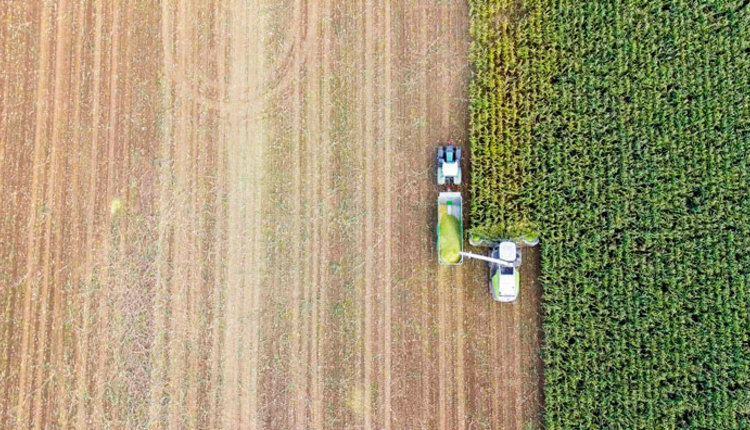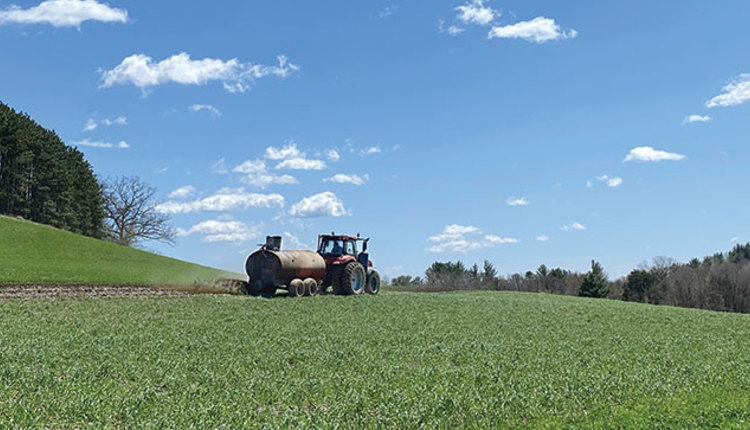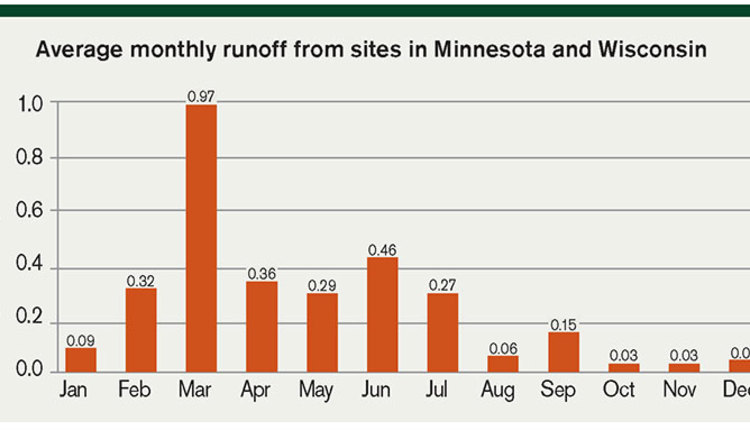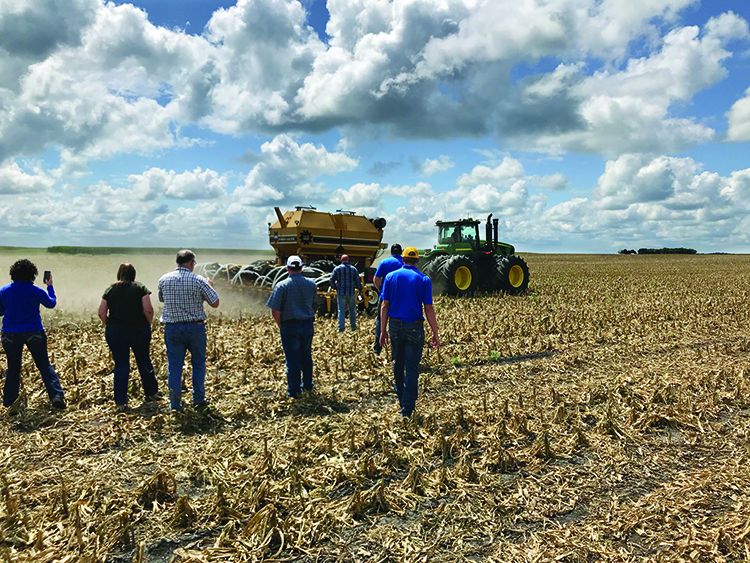
Nutrient applications, from either manure or fertilizer, come with an ever-growing list of items to consider before, during, and after application. Many of these considerations are related to field characteristics or weather and changing seasons.
Since 2001, the Discovery Farms programs in Wisconsin and Minnesota have collected and analyzed water quality data from privately owned farms to develop solutions with farmers for the best ways to protect and preserve water quality resources. Discovery Farms is a farmer-led, water quality research and outreach program led by the University of Wisconsin-Madison Division of Extension in Wisconsin and the Minnesota Agricultural Water Resources Center in Minnesota.
There is tremendous power in understanding the conditions that lead to runoff and risk for nutrient loss. Using that knowledge to make small tweaks can pay big dividends toward achieving sustainable levels of nutrient loss.
Depends on the nutrient
The best time outside of the growing season to apply nutrients depends on the nutrient of concern. In general, nitrogen is best applied close to when the growing crop will use it. This favors spring application. For phosphorus, spring applications can be a higher risk due to elevated moisture conditions and larger storm events, which correspond to more surface runoff. This favors phosphorus application during the drier conditions of fall.
Farming systems, available equipment, location, and other factors will also determine timing of nutrient application. In reality, some fall and spring application will have to occur. Knowing what conditions are important in the fall or spring to prevent nutrient loss is the way to improve nutrient efficiency and protect water resources.
Considerations for fall
Fall can be an excellent time to apply fertilizer or manure. Compared to spring, fall usually has drier conditions and more time for fieldwork. Drier conditions lead to a lower risk of loss via surface runoff. However, without a few extra targeted management steps, fall application can lead to elevated loss of nitrogen.
For applications of fertilizer or manure with high levels of nitrogen, waiting for the soil to cool below 50°F reduces the amount of nitrogen that might be converted to the nitrate form. The reason for this slower conversion of nitrogen in the soil is attributed to reduced microbial activity because of cooler soil conditions. Nitrogen in the form of nitrate moves freely with water. It is easily leachable through the soil profile and lost to shallow groundwater or subsurface tile drainage before the intended crop can utilize it.
Nitrification inhibitors can provide a week or two of protection in the fall if soil temperatures haven’t dropped below 50°F. Products with known efficacy for inhibiting nitrification are dicyandiamide, nitrapyrin, and pronitradine. These chemical compounds temporarily reduce populations of bacteria in soil that are responsible for converting different forms of nitrogen to nitrate. If nutrient application is earlier in the fall where longer protection is needed for higher soil temperatures, cover crops can be planted to take up some of the applied nitrogen.
Spring can also be an excellent time for fertilizer or manure applications. Surface runoff risks are higher, though, because soils are typically wetter and storms are more intense and frequent.
To reduce risk of nutrient losses in the spring, take a walk through the fields before spreading to assess potential risks to water quality. Note weather conditions and forecasts to assess potential for runoff. Delay applications if conditions for surface runoff are present and the forecast is not favorable.
Wisconsin, Minnesota, and several other states have partnered with the National Weather Service and other agencies to create the Runoff Risk Advisory Forecast. This online tool uses Discovery Farms’ runoff data along with weather forecasting technology to assist in predicting when and where runoff might occur.
Follow recommendations
Also consider the method of nutrient application. In general, incorporating nutrients into the soil profile is preferable. However, if soil disturbance due to incorporation raises the risk of soil losses on your farm, incorporation would be a disadvantage. Knowing your landscape and runoff risks allows proper assessment of this risk. What follows is an example of where incorporation of nutrients or a change in application timing could have reduced losses.
The normal range of nitrate-nitrogen concentration in surface water runoff is 0.05 to 5.2 milligrams per liter (mg/L). When water samples from monitoring stations come back much higher than that range, a nutrient application is sometimes the reason.
On one Discovery Farms site, the nitrate concentration of surface water runoff events in May of two different years were over 30 mg/L and ranged up to 80 mg/L. For this field, urea had been broadcast on harvested soybean stubble in late November after the soil temperature had dropped below 50°F.
Nutrient management recommendations agree with waiting until soil temperatures have cooled before applying any nitrogen, but it is also recommended that nitrogen applied during this time period be incorporated immediately. As soil temperatures warmed in the spring, the breakdown of the fall broadcast urea accelerated.
Minimal tillage in the spring resulted in the nitrate nitrogen produced from the breakdown of urea remaining close to the soil surface. In this case, water quality data confirms the agronomic recommendations of following all of the associated mitigation steps to reduce nitrogen losses to local surface waters.
Before an off-season application, consider the following:
• Ensure that crop nutrient needs require this application.
• Incorporate nutrients if it doesn’t lead to substantially increasing soil loss.
• Wait until soil temperatures are below 50°F for fall applications of nitrogen.
• Plant cover crops or utilize nitrification inhibitors.
• Assess surface runoff conditions to properly time nutrient applications and reduce risk of loss.
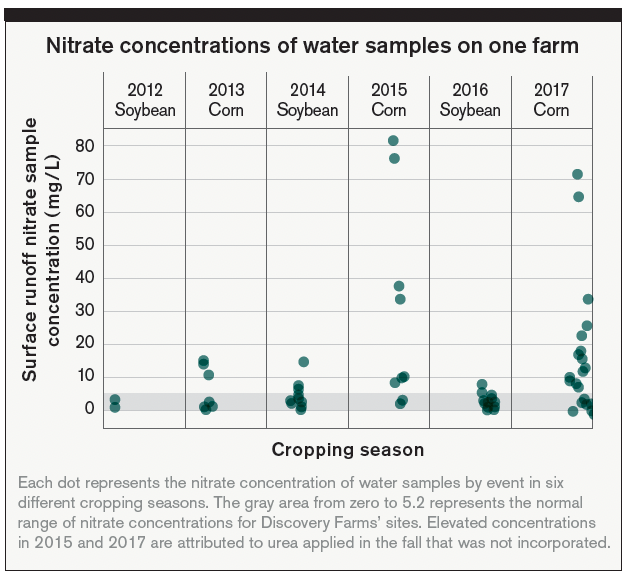
This article appeared in the August 2021 issue of Journal of Nutrient Management on pages 6 and 7. Not a subscriber? Click to get the print magazine.






